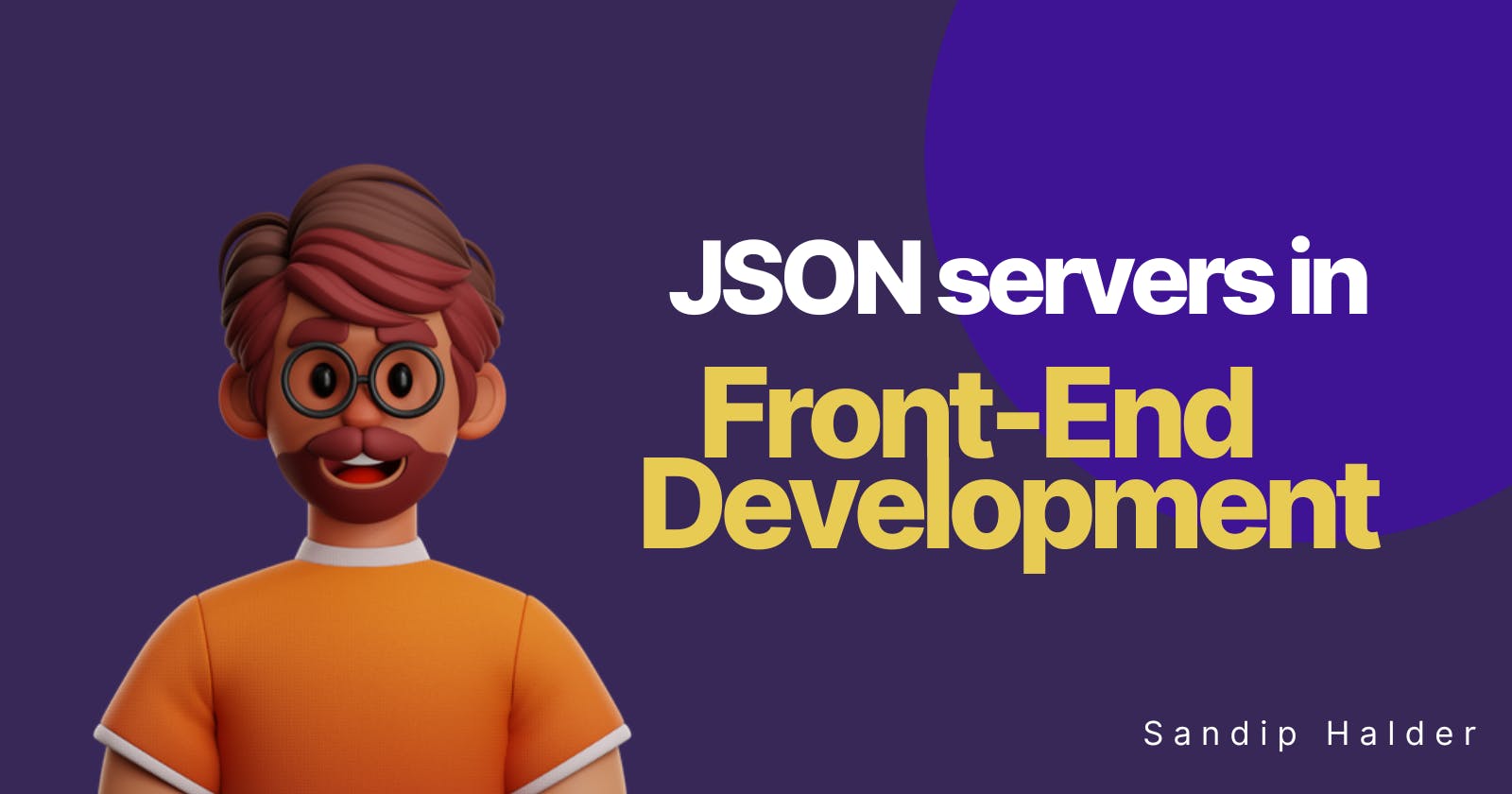A Beginner's Guide to Using JSON Servers in Front-End Development
JSON Server Tutorial
Front-end development is an exciting field that involves creating the user interface and user experience of websites and web applications. One essential aspect of front-end development is handling data, and this is where JSON servers come into play. In this beginner-friendly guide, we'll explore what JSON servers are, why they are essential in front-end development, and how to use them effectively. So, let's dive in!
Introduction to JSON Servers:
JSON (JavaScript Object Notation) servers are lightweight, easy-to-use, and versatile tools for simulating a backend server for your front-end applications. They allow front-end developers to create, read, update, and delete (CRUD) data without the need for a real back-end server. Here's why they are so valuable:
Why JSON Servers Matter:
Mocking Data: JSON servers help you mock data responses, which is especially useful when the back-end isn't ready or you want to develop independently of it.
Rapid Prototyping: They enable you to prototype your front-end applications quickly, test different scenarios, and iterate on designs without waiting for a back-end to be developed.
Isolation: JSON servers keep your front-end and back-end development separate, allowing your team to work on both concurrently.
No Database Setup: You don't need to set up and maintain a database; JSON files are simple and self-contained.
Let's now go into the specifics of implementing JSON servers in your front-end development process.
Setting Up a JSON Server:
Before you can start using a JSON server, you need to set one up. Here's how you can do it:
Install Node.js: The JSON server is a Node.js package, so you'll need Node.js installed on your computer. Download it from nodejs.org if you haven't already.
Install the JSON Server: Open your terminal and run the following command to install the JSON Server globally:
npm install -g json-server
- Create a JSON File: Create a JSON file that will serve as your mock database. For example, you can create a file named
db.json. In this file, you'll define your data structure. Here's an example:
{
"users": [],
"posts": []
}
- Start JSON Server: Navigate to the directory containing your
db.jsonfile and run the following command to start the JSON server:
json-server --watch db.json
This command starts the JSON server and watches the db.json file for changes.
Using JSON Server Endpoints:
Once your JSON server is up and running, you can interact with it through RESTful API endpoints. Here's how you can perform CRUD operations:
Create (POST):
To add data to your JSON server, make a POST request to the relevant endpoint. For example:
fetch('/users', {
method: 'POST',
headers: {
'Content-Type': 'application/sandip',
},
body: JSON.stringify({ name: 'Sandip Halder', email: 'sandip@mail.com' }),
})
.then((response) => response.json())
.then((data) => console.log(data));
Read (GET):
To retrieve data, make a GET request to the desired endpoint. For instance:
fetch('/users')
.then((response) => response.json())
.then((data) => console.log(data));
Update (PUT or PATCH):
To update existing data, use PUT or PATCH requests. Here's an example using PATCH:
fetch('/users/1', {
method: 'PATCH',
headers: {
'Content-Type': 'application/sandip',
},
body: JSON.stringify({ name: 'Updated Name' }),
})
.then((response) => response.json())
.then((data) => console.log(data));
Delete (DELETE):
To delete data, send a DELETE request to the relevant endpoint:
fetch('/users/1', {
method: 'DELETE',
})
.then((response) => response.json())
.then((data) => console.log(data));
Handling Relationships:
JSON servers allow you to model relationships between data entities. For example, you can have users who have posts associated with them. To handle relationships, you can use nested data structures in your db.json file.
{
"users": [
{ "id": 1, "name": "jack" }
],
"posts": [
{ "id": 1, "title": "First Post", "userId": 1 }
]
}
Conclusion:
JSON servers are a fantastic tool for front-end developers to create, test, and prototype their applications without the need for a full-fledged back-end server. By following the steps outlined in this guide, you can quickly set up a JSON server, define your data structures, and interact with your mock data using RESTful API endpoints. This flexibility and speed can greatly enhance your front-end development workflow, allowing you to iterate and innovate with ease.
Happy coding! 😃
